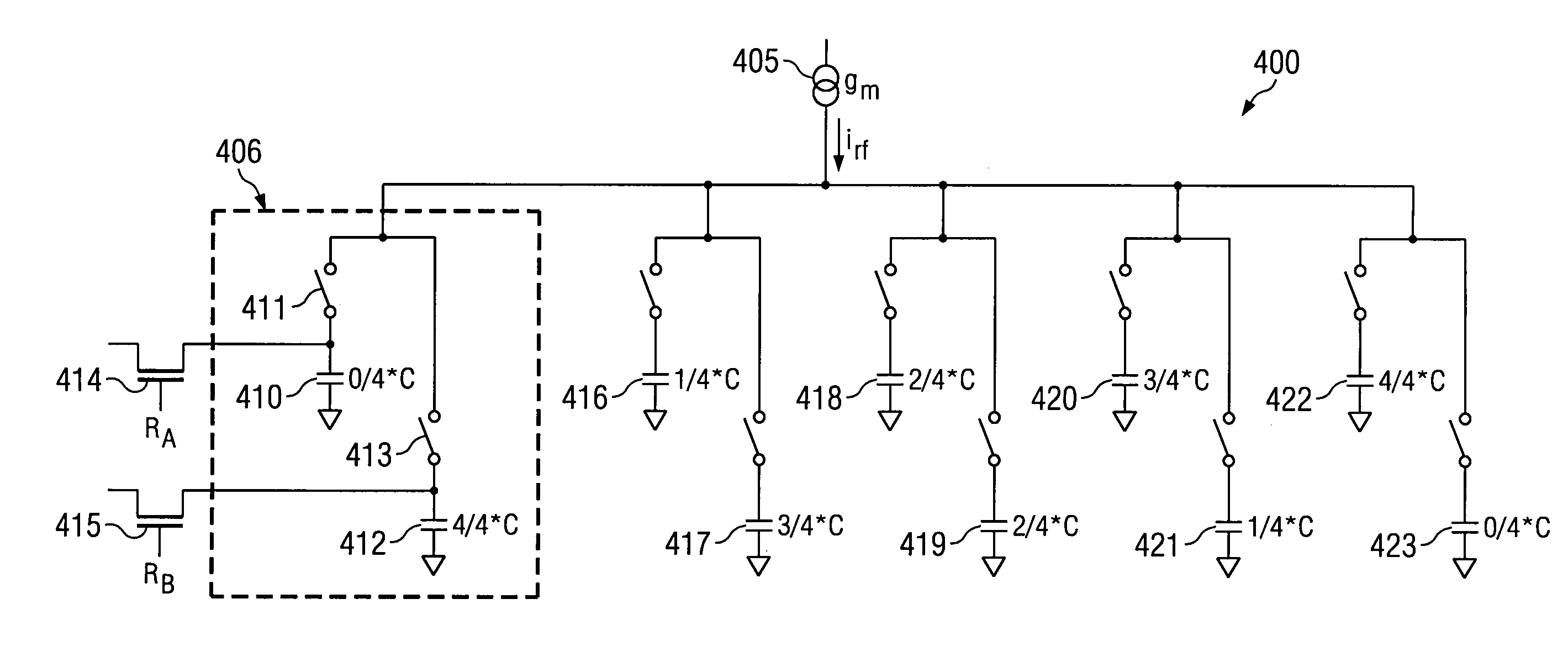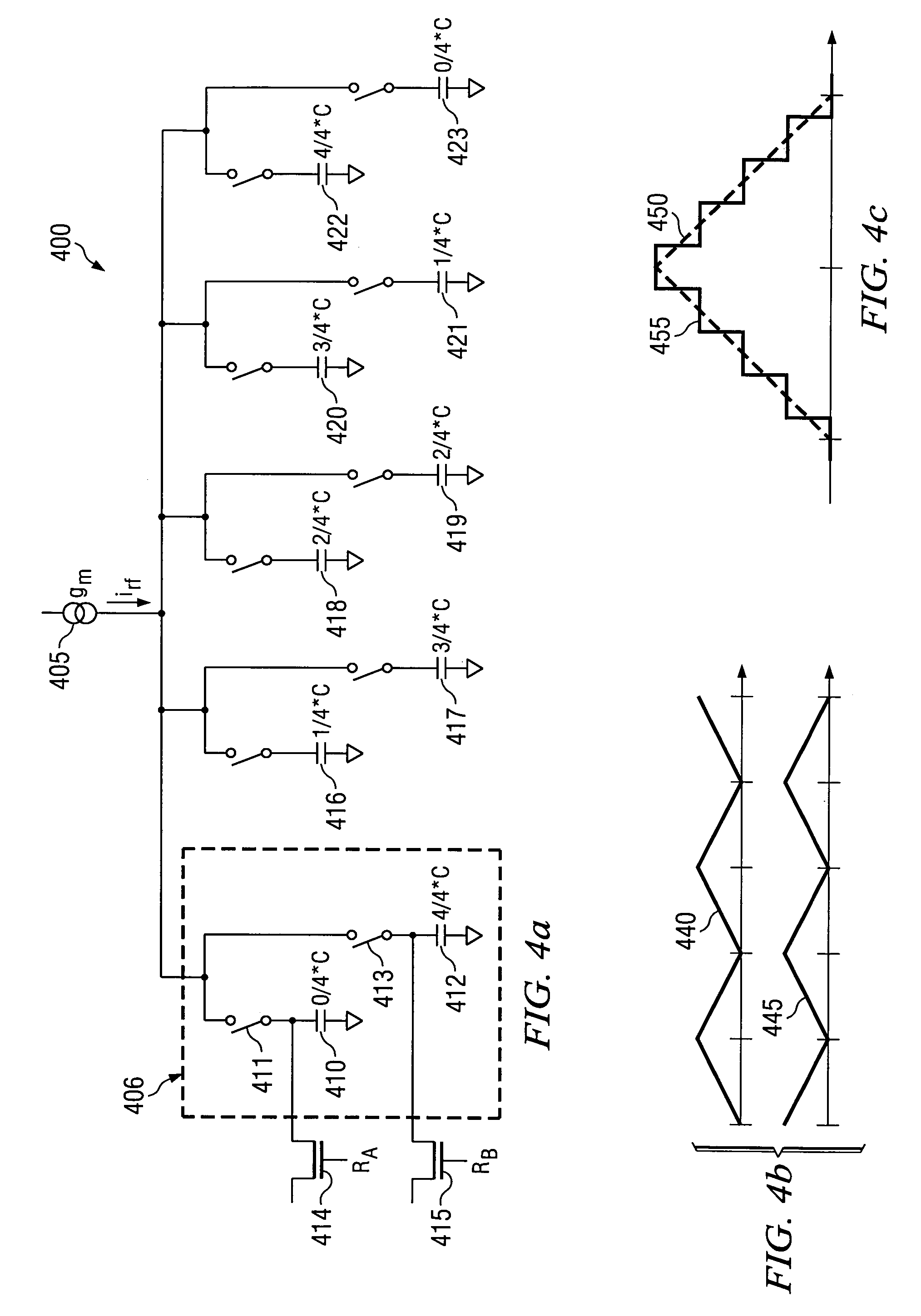Removing close-in interferers through a feedback loop
a feedback loop and interference technology, applied in the field of radio frequency direct sampling system and method, can solve the problems of large magnitude, inability to integrate components such as capacitors, resistors, capacitors, etc., necessary for analog filters, and inability to achieve the effect of reducing noise influence,
- Summary
- Abstract
- Description
- Claims
- Application Information
AI Technical Summary
Benefits of technology
Problems solved by technology
Method used
Image
Examples
Embodiment Construction
[0035]The making and using of the presently preferred embodiments are discussed in detail below. It should be appreciated, however, that the present invention provides many applicable inventive concepts that can be embodied in a wide variety of specific contexts. The specific embodiments discussed are merely illustrative of specific ways to make and use the invention, and do not limit the scope of the invention.
[0036]The present invention will be described with respect to preferred embodiments in a specific context, namely a direct RF sampling mixer operating in a 2.4 Gigahertz frequency band in a radio receiver that is adherent to the Bluetooth technical standards. The Bluetooth technical standard specifies a short-range wireless communications network whose intended purpose is a low-power and low-cost replacement for physical cabling. The Bluetooth technical standard is specified in a document entitled “Specification of the Bluetooth System, Version 1.1, Feb. 22, 2001,” which is i...
PUM
 Login to View More
Login to View More Abstract
Description
Claims
Application Information
 Login to View More
Login to View More - R&D
- Intellectual Property
- Life Sciences
- Materials
- Tech Scout
- Unparalleled Data Quality
- Higher Quality Content
- 60% Fewer Hallucinations
Browse by: Latest US Patents, China's latest patents, Technical Efficacy Thesaurus, Application Domain, Technology Topic, Popular Technical Reports.
© 2025 PatSnap. All rights reserved.Legal|Privacy policy|Modern Slavery Act Transparency Statement|Sitemap|About US| Contact US: help@patsnap.com



